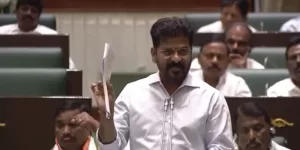One third of Bihar’s families are poor and living in abject poverty, with their monthly income at a mere Rs 6,000. Most of such families belong to the Scheduled Castes (SC) or dalits, Scheduled Tribes (ST) or adivasis, Other Backward Classes (OBCs) and Extreme Backward Classes (EBCs). This was revealed by socio-economic data of the Bihar caste survey report, which was presented in the state legislative Assembly on Tuesday, November 7.
This is probably the first time in the country that socio-economic data of the caste survey was released in public. The much-awaited data is bound to trigger a fresh public debate on how to mainstream all those lagging in the socio-economic index.
According to socio-economic data of the report, poverty is rampant in Bihar, with 34.13% of all families in the state as poor. But the number of poor families is highest in SCs and STs followed by OBCs and EBCs.
As per the data, 42.93% SC families and 42.70% ST families are poor, while 33.16% OBC families and 33.58% EBC families are also poor.
Among the SCs, poverty is highest among the Musahar community, known as one of India’s most marginalised ones in the caste hierarchy. About 54% of Musahar families are poverty-
stricken, followed by 53% among Bhuiyan and 42% among Chamar or Mochi.
Among the OBCs, 35.87% families of Yadavs are poor followed by 34.32% Kushwahas and 29.9% Kurmis.
Bihar Deputy Chief Minister Tejashwi Yadav and his father and Rashtriya Janata Dal JD chief Lalu Prasad belong to the Yadav caste, considered powerful in political terms. Similarly, Chief Minister Nitish Kumar belongs to the Kurmi caste.
Only 25.09% of the General Category (Upper Castes) families are poor, which is much lower compared to others. Among upper castes, poverty is highest among Bhumihars at 27.58%, followed by Brahmins.
The report found that the monthly income of 34.13% of all families in the state is a meagre Rs 6,000 and 29.61% families survive on a monthly income between Rs 6,000 and Rs 10,000. While the monthly income of 18.06% families is between Rs 10,000 and Rs 20,000 and a mere 9.83% families have monthly income between Rs 20,000 and Rs 50,000. Only 3.90% families monthly income is more than Rs 50,000. More than 4% families refused to share their monthly income.
On October 2, the Mahagathbandhan government released the caste survey report and soon after announced that it would release the socio-economic data of the report soon.
According to the Bihar caste survey, there are 215 castes in Bihar, and the total population of the state is 13.7 crore. This includes 36% Extreme Backward Classes (EBCs), 27% Other Backward Classes (OBCs) (OBCs and EBCs together account for 63%), 19% Scheduled Castes (Dalits), and 1.68% Scheduled Tribes (Adivasis).
It is noteworthy that the population of SCs has increased in the state since the 2011 census. There has also been a slight increase in the Muslim population. However, the population of Upper Castes, locally known as Savarna, has decreased to 15.52%, including 2.86% Bhumihar, 3.66% Brahmin, 3.45% Rajput, and 0.60% Kayasth. The remaining 4.8% are upper castes among Muslims, including Syed, Sheikh, and Pathan.
According to the report, Chief Minister Kumar’s Kurmi caste population is 2.87%, and RJD chief Lalu’s Prasad’s caste population is 14.26%, one of the highest among all castes.
BJP’s state president, Samrat Kushwaha, belongs to the Koeri or Kushwaha (OBC) caste, with a population of 4.21%.
The caste survey report also revealed that the total Hindu population is 81.9%, followed by 17.7% Muslims, 0.05% Christians, 0.01% Sikhs, 0.08% Buddhists, 0.0096% Jains, and the remaining population follows other religions.
(Courtesy: Newsclick.)




